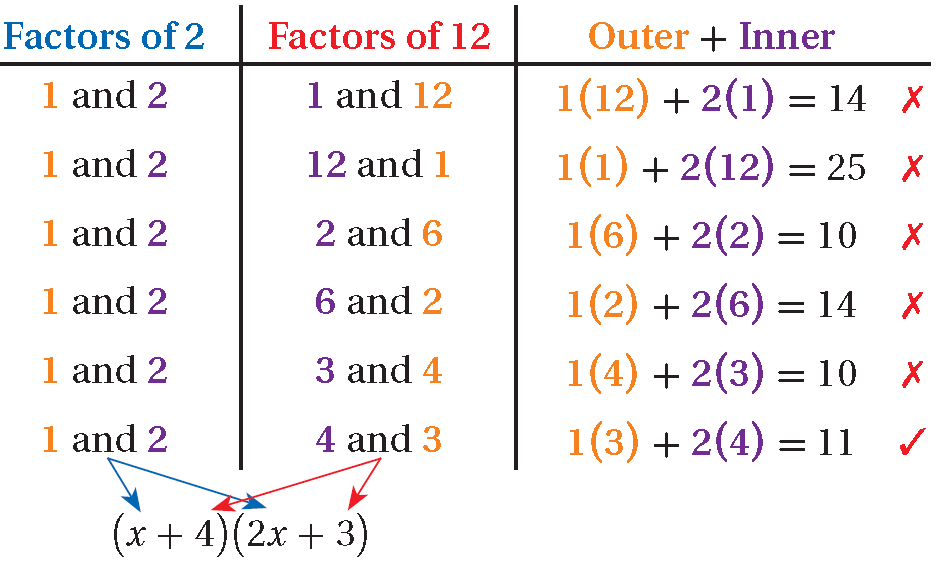VERIFYING COMMUTATIVE AND ASSOCIATIVE PROPERTIES WITH GIVEN SETS
(i) Commutative Property :
(a) A u B = B u A
(Set union is commutative)
(b) A n B = B n A
(Set intersection is commutative)
(ii) Associative Property :
(a) A u (B u C) = (A u B) u C
(Set union is associative)
(b) A n (B n C) = (A n B) n C
(Set intersection is associative)
Question 1 :
Given A = {a, x, y, r, s}, B = {1, 3, 5, 7, -10}, verify the commutative property of set union.
Solution :
Commutative property of set union
AUB = BUA
AUB = {a, x, y, r, s} U {1, 3, 5, 7, -10}
AUB = {a, x, y, r, s, 1, 3, 5, 7, -10} ------ (1)
BUA = {1, 3, 5, 7, -10} U {a, x, y, r, s}
BUA = {a, x, y, r, s, 1, 3, 5, 7, -10} ------ (2)
(1) = (2)
Question 2 :
Verify the commutative property of set intersection for A = {l, m, n, o, 2, 3, 4, 7} and B = {2, 5, 3, -2, m, n, o, p}
Solution :
commutative property of set intersection
A⋂B = B⋂A
A⋂B = {l, m, n, o, 2, 3, 4, 7} ⋂ {2, 5, 3, -2, m, n, o, p}
= {m, n, o} --- (1)
B⋂A = {2, 5, 3, -2, m, n, o, p} ⋂ {l, m, n, o, 2, 3, 4, 7}
= {m, n, o} --- (2)
(1) = (2)
Question 3 :
For A = {x|x is a prime factor of 42}, B = {x|5 < x ≤ 12, x ∈ N} and C = {1, 4, 5, 6}
verify AU(BUC) = (AUB)UC.
Solution :
A = {x|x is a prime factor of 42}
A = {2, 3, 7}
B = {x|5 < x ≤ 12, x ∈ N}
B = {6, 7, 8, 9, 10, 11, 12}
C = {1, 4, 5, 6}
L.H.S
AU(BUC)
(BUC) = {6, 7, 8, 9, 10, 11, 12}U{1, 4, 5, 6}
= {1, 4, 5, 6, 7, 8, 9, 10, 11, 12}
AU(BUC) = {2, 3, 7}U{1, 4, 5, 6, 7, 8, 9, 10, 11, 12}
= {1, 2, 3, 4, 5, 6, 7, 8, 9, 10, 11, 12} --- (1)
R.H.S
(AUB)UC
(AUB) = {2, 3, 7}U{6, 7, 8, 9, 10, 11, 12}
(AUB) = {2, 3, 6, 7, 8, 9, 10, 11, 12}
(AUB)UC = {2, 3, 6, 7, 8, 9, 10, 11, 12} U {1, 4, 5, 6}
(AUB)UC = {1, 2, 3, 5, 6, 7, 8, 9, 10, 11, 12} ----(2)
(1) = (2)
Question 4 :
Given P = {a, b, c, d, e} Q = {a, e, i, o, u} and R ={a, c, e, g}. Verify the associative property of set intersection.
Solution :
P∩(Q∩R) = (P∩Q)∩R
L.H.S
P∩(Q∩R)
(Q∩R) = {a, e, i, o, u} ∩ {a, c, e, g}
Q∩R = {a, e}
P∩(Q∩R) = {a, b, c, d, e}∩{a, e}
P∩(Q∩R) = {a, e} ---- (1)
R.H.S
(P∩Q)∩R
(P∩Q) = {a, b, c, d, e} ∩ {a, e, i, o, u}
(P∩Q) = {a, e}
(P∩Q)∩R = {a, e}∩{a, c, e, g}
(P∩Q)∩R = {a, e} ---- (2)
(1) = (2)
Hence proved

Apart from the stuff given above, if you need any other stuff in math, please use our google custom search here.
Kindly mail your feedback to v4formath@gmail.com
We always appreciate your feedback.
©All rights reserved. onlinemath4all.com
Recent Articles
-
Factoring Quadratic Trinomials Worksheet
Apr 25, 24 07:47 PM
Factoring Quadratic Trinomials Worksheet -
Factoring Quadratic Trinomials
Apr 25, 24 07:03 PM
Factoring Quadratic Trinomials - Methods - Solved Examples -
Multi Step Algebra Word Problems
Apr 23, 24 09:10 PM
Multi Step Algebra Word Problems

